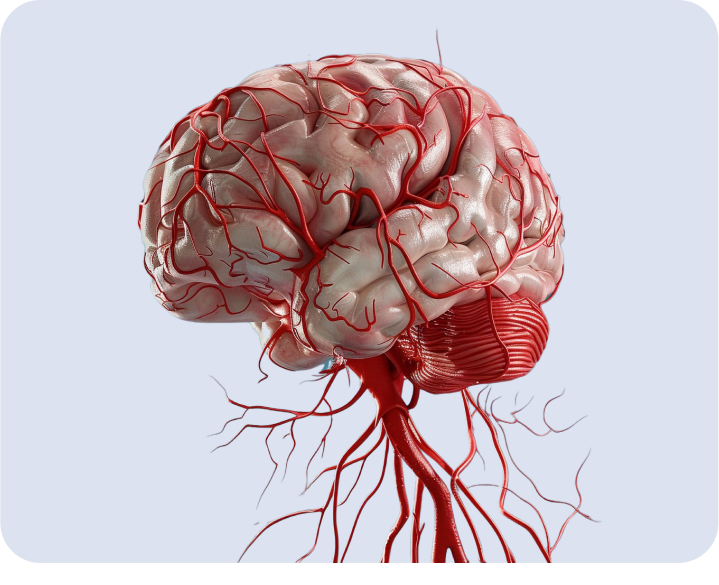Ophthalmology
Registered on ClinicalTrials
Neuroprotective therapy with age -related macular degeneration
Authors:
Vlasova A.S. 1*, Petrov S.A. 1*, 2*, Renzyak E.V. 1*, 3*
1* ANCOO DPO “West Siberian Institute of Postgraduate Medical Education”, Tyumen, Russia;
2* FSBUN FIC "Tyumen Scientific Center of the Siberian Branch of the Russian Academy of Sciences", Tyumen, Russia;
3* of the Khanty-Mansiysk Autonomous Okrug-Ugra "District Clinical Hospital", Khanty-Mansiysk, Russia
The value of mitochondrial dysfunction in stabilization
Registered on ClinicalTrials
VLASOVA A.S. 1.4* , MALISHEVSKAYA T.N. 2* , PETROV S.A. 1.3* , GUBIN D.G. 5* , PETROV S.YU. 2* , FILIPPOVA Yu.E. 1*
1* ANCOO DPO “West Siberian Institute of Postgraduate Medical Education”, Tyumen, Russia;
2* FSBI "NMIC of eye diseases named after Helmholtz »Ministry of Health of Russia, Moscow, Russia;
3* FGBUN "Federal Research Center of the Tyumen Scientific Center of the Siberian Branch of the Russian Academy of Sciences", Tyumen, Russia;
4* Gauz of the Tyumen region "Regional ophthalmology dispensary" of the Ministry of Health of Russia, Tyumen, Russia;
5* FSBEI in "Tyumen State Medical University" of the Ministry of Health of Russia, Tyumen, Russia
The effect of antioxidant therapy on some pathogenetic factors of primary open -angle glaucoma
Authors:
T.N. Malishevskaya 1 , Yu.E. Filippova 2
1 FSBI "National Medical Research Center of Eye Diseases named after Helmholtz »Ministry of Health of Russia, Moscow, Russia;
2 GAUZ “Regional Ophthalmological Dispensary”, Tyumen, Russia
The possibilities and results of the use of antioxidant therapy in ophthalmological practice
Authors:
A.B. Movsisyan 1.2 , J.G. Oganezova 2.3 , E.A. Egorov 2
1 GBUZ “Hospital for Wars of Wars No. 2 DZM”, Moscow, Russia;
2 FGAOU in Russian National Research Medical University named after N.I. Pirogov »Ministry of Health of Russia, Moscow, Russia;
3 FGBNU "Medical and Genetical Scientific Center named after Acad. N.P. Bochkova ", Moscow, Russia
The use of Mexidol in the treatment of primary open -angle glaucoma
Authors:
I.A. Loskutov, O.M. Andryukhina, A.A. Kovrizhkina
Moscow Regional Research Clinical Institute. M.F. Vladimir
The experience of neuroprotective therapy of primary open -angle glaucoma based on the use of various forms of Mexidol
Authors:
E.S. Leonova 1.2 , S.V. Polyakov 1.2 , M.A. Pozdnyakova 2 , E.P. Yarygina 3 , S.O. Semisinov 2
1 NUZ "Road Clinical Hospital at the Gorky station OJSC" Russian Railways ", the interdorrutal center of ophthalmology
2 GBOU VPO" Nizhny Novgorod State Medical Academy "
3 GBUZ but" City Hospital No. 35 ", City Glacks Center
The experience of neuroprotective therapy of primary open -angle glaucoma based on the use of various forms of Mexidol
Authors:
E.S. Leonova1, 2, S.V. Polyakov1, 2, M.A. Pozdnyakova2, E.P. Yarygin3, S.O. Semisov2
1 nose "Road Clinical Hospital at the Gorky station OJSC" Russian Railways ", the interdorrutal center of ophthalmology, 18 Lenin Ave., Nizhny Novgorod, Russian Federation, 603140;
2GBOU VPO Nizhny Novgorod State Medical Academy, pl. Minina and Pozharsky, 10/1, Nizhny Novgorod, Russian Federation, 603950;
3GBUZ but "City Hospital No. 35", City Glack Center, ul. Osharskaya, 15, Nizhny Novgorod, Russian Federation, 603005
Place of publication:
Bulletin of ophthalmology 6, 2015
Assessment of Mexidol's effectiveness in the complex treatment of glaucomone neuropathy
Authors:
A.N. Bolatbekova, D.E. Kopbaeva, A.I. ARINOVA, B.S. Abrakhmanova
LLP "Center for Microsurgery of the Eye", Karaganda
KGP "Regional Clinical Hospital", Karaganda,
Karaganda State Medical University, Karaganda
Our experience in the use of Mexidol in the complex treatment of patients with primary open -angle glaucoma
Authors:
E.A. Afonina, M.A. Levko, L.V. Chekurova, T.I. Kosacheva
SZGMU them. I.I. Mechnikov, St. Petersburg
Antioxidant drug in neuroprotective therapy for glaucoma
Authors:
E.A. Egorov 1 , A.A. Gvetadze 1 , N.G. Davydova 2
1 rnim them. N.I. Pirogov;
2 FSBI "Moscow Research Institute of Eye Diseases. Helmholtz »Ministry of Health of the Russian Federation
The effectiveness of the use of 3-oxypyridine and amber acid derivatives in the complex treatment of primary open-angle glaucoma
Authors:
I.A. Volchersky 1 , E.V. Tour 1 , O.V. Solyannikova 1 , V.S. Rykun 1 , M.S. Sumin 2 , V.N. Dmitrienko 2 , E.V. Berdnikova 1
1 Department of Pharmacology (Head
- Prof. Dmitrienko) GMLPUZ "Chelyabinsk Regional Clinical Hospital", Medgorodok
The influence of a water -soluble antioxidant drug (Mexidol) on the sensitivity of the optic nerve and blood flow velocity in the arteries of the eyeball and orbit in patients with the primary open -angle glaucoma
Authors:
I.A. Volchersky 1 , E.V. Tour 1 , O.V. Solyannikova 1 , V.S. Rykun 1 , E.V. Berdnikova 1 , M.S. Sumin 2 , V.N. Dmitrienko 2
1 GBOU VPO "Chelyabinsk State Medical Academy" of the Ministry of Health and Social Development of Russia;
2 GMLPUZ "Chelyabinsk Regional Clinical Hospital"
Mexidol in the complex treatment of glaucoma
Author:
E.A. Egorov, N.G. Davydova, I.A. Romanenko, N.D. Novikova
RNIMU named after N.I. Pirogov, GB of GB named after Helmholtz, Moscow
THE INFORMATION IS INTENDED FOR HEALTHCARE AND PHARMACEUTICAL PROFESSIONALS. THIS INFORMATION IS NOT INTENDED AS A SUBSTITUTE FOR MEDICAL ADVICE.
Source of photos and images Shutterstock.com














